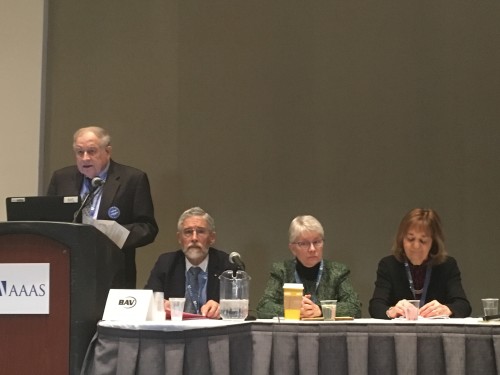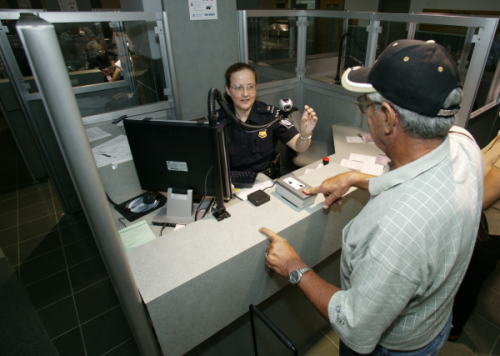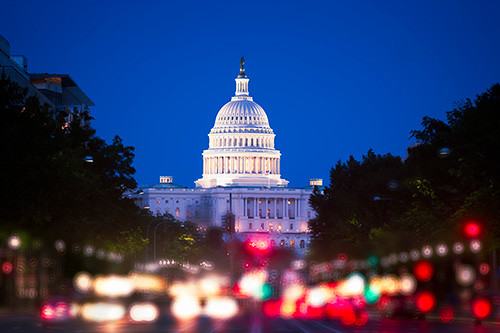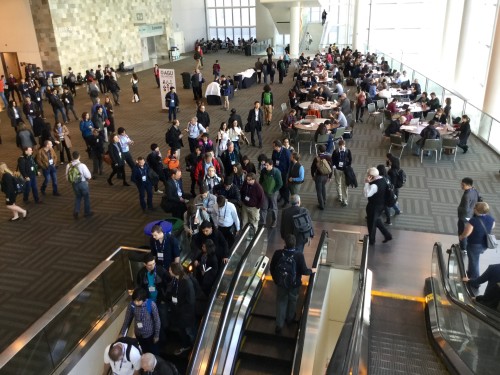Tag archives: politics
Eye-catching signs from March for Science Bristol
By James Dacey
On Saturday, there were almost 600 sister events across the globe in support of the March for Science gathering in Washington, DC. One such event occurred in Bristol, UK, where Physics World magazine is produced, which featured a march and speeches from science communicators. I popped along to the event with my camera and here are some of the most eye-catching signs from the day.
View all posts by this author | View this author's profile
LEGO acoustics, potato cannons go to war, personal politics and popular science
By Hamish Johnston
In the above video Brian Anderson of Brigham Young University shows how the acoustic concept of “time reversal” can be used to knock over a series of LEGO figures using sound. The idea is that sound waves are broadcast into an environment and captured by a sensor at a specific location. The signal is then used to work-out how the sound waves bounced about before reaching the location and this information is then used to target that specific location with subsequent sound waves. In the demonstration, sound knocks over 29 LEGO figures one-by-one. It’s very impressive and entertaining as well.
View all posts by this author | View this author's profile
US policy chiefs explain how to handle Trump

Speaking out – Neal Lane introduces John Holdren (left), Kerri-Ann Jones (centre) and Rosina Bierbaum at the 2017 meeting of the American Association for the Advancement of Science in Boston.
By Matin Durrani in Boston, US
I’m here at the 2017 meeting of the American Assocation for the Advancement of Science in Boston, where the theme is “Serving society through science policy”. The focus was picked last year, but it turned out to be an auspicious choice with the election of Donald Trump throwing the science community into uncharted policy waters.
Trying to make sense of what life will be like for US scientists under the Trump administration were five people with extensive experience of working closely with recent US presidents.
Chairing the session was Neal Lane, who served as Bill Clinton’s presidential science adviser for two years in the 1990s. Also present was physicist John Holdren, who spent eight years until last month as Barack Obama’s science chief, for which the audience gave him a generous round of applause.
Physics in the US: no longer business as usual

New rules: citizens of seven countries have been barred from the US. (Courtesy: CBP)
By Matin Durrani
Over the last couple of years here at Physics World, we’ve been publishing special reports examining the state of physics in different nations around the world, including Brazil, China, Japan, India, Korea and Mexico.
When we decided in September last year to publish our next special report in 2017 on the US, it seemed reasonable to expect that Hillary Clinton was going to be elected president. For science, a Clinton presidency would pretty much have been “business as usual” and so, probably, would have been the tone of our special report.
But now that Donald Trump is in the White House, it looks as if we’re entering a period where the US is as far removed from “business as usual” as you could imagine.
View all posts by this author | View this author's profile
American angst

Danger ahead – Donald Trump’s election as US president will not be business as usual for science policy. (Courtesy: iStock/uschools)
By Matin Durrani
Like many people, I’m fearful of the imminent Donald Trump presidency, given the many sexist, racist and otherwise unpleasant remarks he made during the US election campaign. However, his slogan – “Make America great again” – proved powerfully effective for many voters. Who, after all, could disagree with renewed domestic glory? Sadly, Trump’s plans for achieving that goal – what little we know of them – are based on such ill-informed and ignorant views that he could damage America’s long-standing leadership in many areas, including science.
View all posts by this author | View this author's profile
The September 2016 issue of Physics World is now out
By Matin Durrani
The cover story in the September 2016 issue of Physics World magazine – now live in the Physics World app for mobile and desktop – reveals the fascinating new field of “crowd breath research”, which can even shed light on how cinema audiences react during the changing scenes in a movie. You can read the article here on physicsworld.com too.
The September issue also shows how to do crystallography without crystals, explains how first data from the Gaia spacecraft could revolutionize astronomy (see the above video for more on that), and contains one physics teacher’s fascinating story about what she did to change her school’s gender balance.
Don’t miss either reader feedback on the potential impact of Britain leaving the EU on physics or Robert P Crease’s Critical Point column on why science denial is one of the most important issues in the US presidential campaign.
View all posts by this author | View this author's profile
The June 2016 issue of Physics World is now out
 By Matin Durrani
By Matin Durrani
Physicists can turn their hands to some unusual subjects. But in the June 2016 issue of Physics World magazine – now live in the Physics World app for mobile and desktop – we reveal the unexpected link between physics and ancient Icelandic sagas. If you don’t believe us, check our cover feature out.
Meanwhile, with the UK referendum on its membership of the European Union (EU) looming, we examine what impact the EU has on UK physics – and how remaining in or leaving the EU could affect the country’s science.
Don’t miss either our review of the new film The Man Who Knew Infinity, while our forum section this month has advice from Barry Sanders of the University of Calgary for how best to collaborate with scientists in China. There’s also a great interview with the new president of the US National Academy of Sciences Marcia McNutt.
View all posts by this author | View this author's profile
Are reticent climate researchers ‘failing humanity’?

By James Dacey in San Francisco
Droves of delegates poured into the Moscone Center in San Francisco today for day one of AGU Fall 2015 – the largest Earth and space-science meeting in the world, with a whopping 24,000 delegates expected over the week. Having arrived from the UK on Saturday night, the jet-lag has kicked in with a vengeance today, so a couple of the conference coffees were definitely in order this morning. I’m just taking a break now after an interesting session about communicating climate change, and whether those researchers who don’t engage in the public debate are “failing humanity”.
The room was packed to the rafters, no doubt down to the profile of the speakers. First up was James Hansen, the former NASA scientist who has been outspoken in his criticism of the recent COP21 climate discussions, or at least the lack of concrete proposals to cut carbon emissions. Hansen restated his beef with the deal and argued that the only workable solution is for authorities to collect a carbon fee at source, such as charging domestic mines for the weight of carbon they sell. This, he believes, is the most effective way to make renewable energy and low-carbon options more viable. Not one to pull his punches, Hansen described US Energy Secretary Ernest Moniz’s idea that China will be able to curb much of its carbon missions using carbon capture and storage (CSS) technologies as “pure unadulterated bullshit”.
Physicists in motion: immigration and the Nobel prize

Around the world: how has immigration shaped the global physics community? (Courtesy: iStockphoto/Joel Carillet)
By Hamish Johnston
In December 1938 Enrico Fermi travelled to Stockholm, where he was presented with that year’s Nobel Prize for Physics for his insights into the atomic nucleus. But after the ceremony, Fermi did not return to his native Italy. Instead, he joined his wife and young children on a voyage to the US. Fermi went on to make major contributions to physics in that country – including playing crucial roles in developing nuclear weapons and nuclear energy.
View all posts by this author | View this author's profile
Quantum mechanics in a cup of coffee, hamming it up to the space station, the laws of political physics and more
By Hamish Johnston and Michael Banks
Physicists tend to drink lots of coffee so I wasn’t the least bit surprised to see the above video of Philip Moriarty explaining quantum mechanics using a vibrating cup of coffee. Moriarty, who is at the University of Nottingham, uses the coffee to explain the physics underlying his favourite image in physics. You will have to watch the video to find out which image that is, and there is more about the physics discussed in the video on Moriarty’s blog Symptoms of the Universe.
